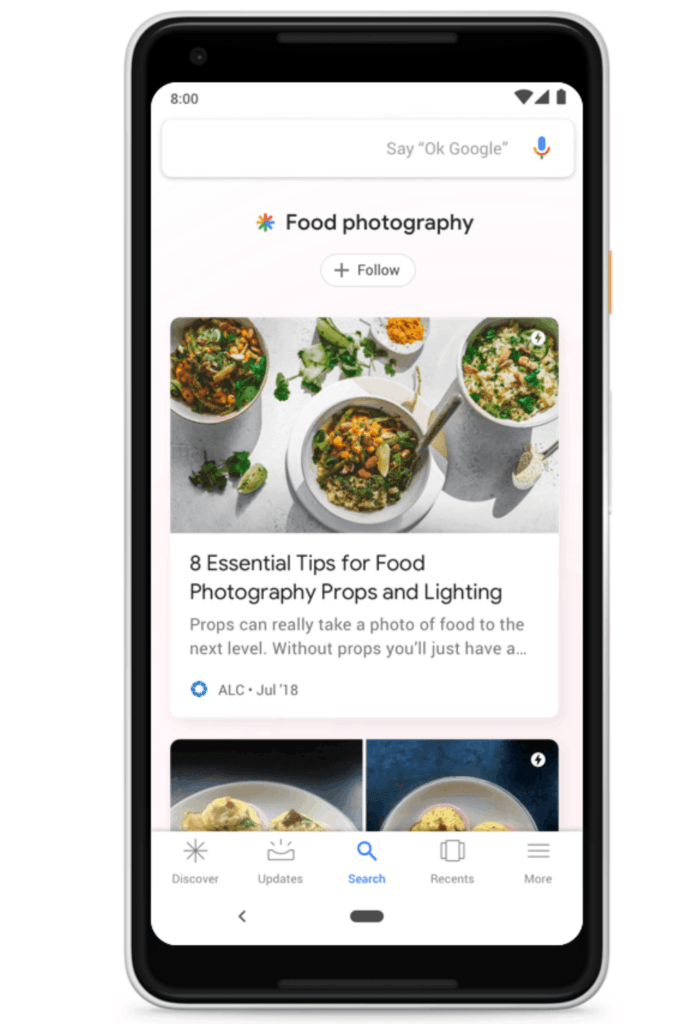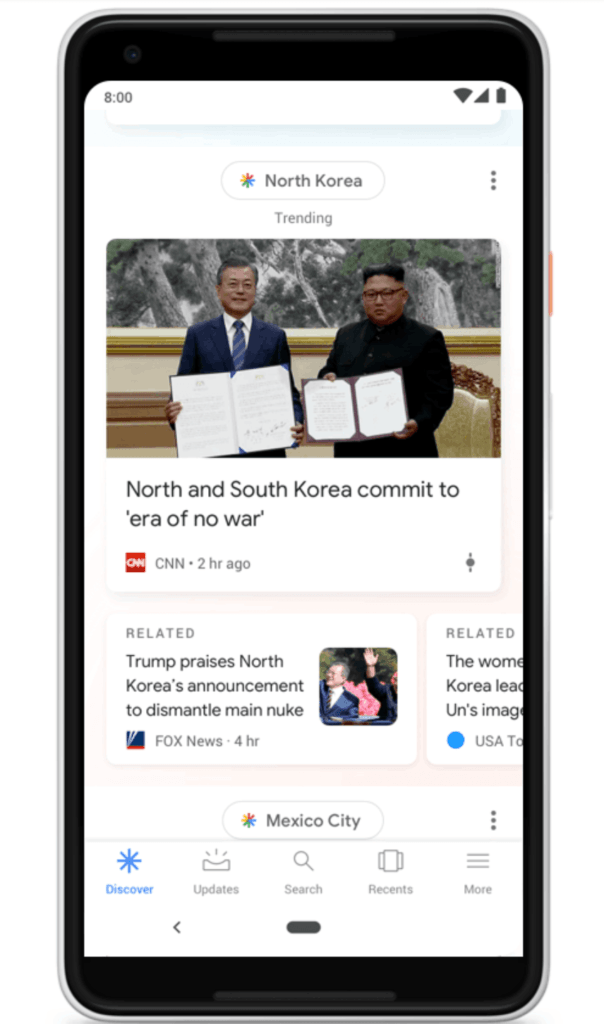Google Discover continues to evolve and change how we search online.
Back in 2016, Google made major changes to the way its search engine operated by using a ‘feed’. Upon opening the Google app on your phone, the homepage will look more like a social media feed than a search engine.
The feed is split into two sections. The first showing cards with news, sports, music and anything else you find interesting. The more things you search for on Google, the more personalised and bespoke these cards become.
The second section shows you a dashboard of your personal information. This could include your daily schedule or diary, travel times, package deliveries and more.

Image from Google
How Google Discover started
Up until 2018, Google Discover was called Google Feed. The new name saw a new design that was more visual focusing on images and videos more heavily.
Now, as well as using your search history, the machine learning algorithm behind the tech also uses your location. Through this, the cards can show trending news stories in your area as well as around the world. However, the same message still applies: the more you use Google, the better your experience will be.
Google also introduced the ability for you to manually choose topics to follow. So, if you like a certain TV show, you can add this to your favourite topics. You will then be shown news and updates for this topic. It’s also just as easy to unfollow a topic. Whether this be one Google thinks you would like or one you’re no longer interested in. Similarly, there is also now a ‘discover’ tab. Much like the tab of the same name in Instagram, the discover tab shows you content Google think you may like.
How to use Google Discover for SEO marketing
Google Discover is still a relatively new thing. Plus, it only works in the Google app. So, it’s by no means a replacement of the traditional Google search. However, there are several ways of using Google Discover in your digital marketing to increase traffic and exposure online. Luckily for us, these are familiar techniques we already use for standard search.

Image from Google
Create and link meaningful content
As with anything, the key message from Google is that marketers should focus on creating meaningful content. Content on the Discover page is algorithmically ranked by what Google thinks a user will find most interesting.
In order to get yourself on to the Discover page, you should create several content pieces on a related topic and internally link between these pages. This essentially tells the Google algorithm that these pieces of content are connected to a core topic. As a result, if a user organically discovers your content in a regular search, they are more likely to see one of your connected (linked) pages in their Discover feed.
Make sure your site is optimised for mobile
Aside from making readable and aesthetically pleasing content, there is still technical work to be done. Since Google Discover is only available on mobile, making sure your site is optimised accordingly has never been more important.
As we all know, Google is always moving more towards mobile usability. This was emphasised once again in their latest Core Web Vitals update. Pages that are optimised for mobile see decreased bounce rates and longer sessions. Plus, a well-optimised site for mobile is something that will make your site more credible in the eyes of the algorithm. This, in turn, will boost your organic rankings.
Focus more on video content
Video content is well and truly the way forward for digital marketing.
Earlier we mentioned how Google Discover was updated to be more visual. The algorithm favours rich content, like video. The aim of Google Discover is to get users to engage with their interests online and simultaneously find new ones. With video content, you’re more likely to see rankings and metrics increase than with written content alone.
Google Discover also emphasises evergreen and recent content. Evergreen content is content that always stays “fresh”. Anything that is anchored to a specific event, year or campaign that won’t be relevant in a few weeks or months’ time isn’t evergreen, it’s limited. So, an evergreen video could include tutorials, demos and interviews – anything that is timeless. These are far more likely to be picked up by the algorithm and shown to users in their feeds.
Are you looking for support with you SEO? Send us an email on team@modo25.com to discover how we can work together.






